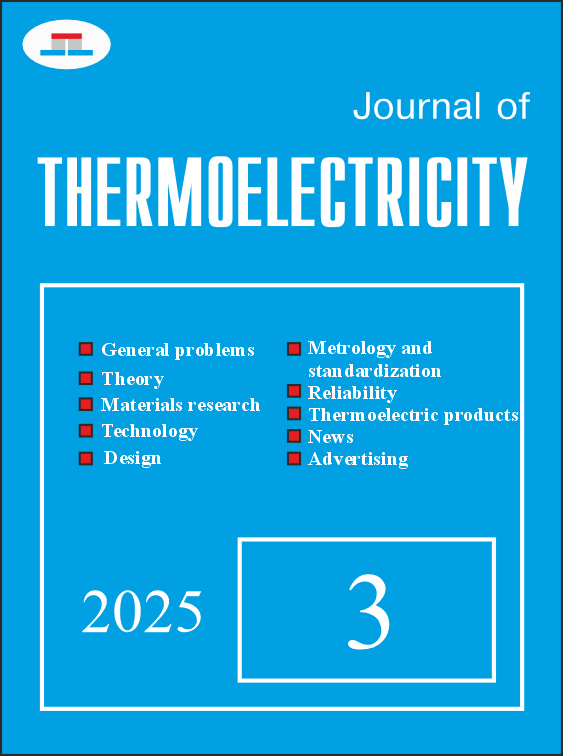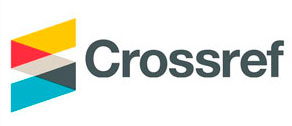Network Analysis of Co-authorship and Research Directions in Thermoelectrics
DOI:
https://doi.org/10.63527/1607-8829-2025-3-71-91Keywords:
generalized co-authorship network, subject domain, LLM, scientometric service, network sounding, topic descriptors, thermoelectricityAbstract
This paper presents a methodology for constructing an extended co-authorship network in the field of thermoelectrics by integrating direct co-authorship links with thematic proximity derived from researchers’ Google Scholar profiles. The network is built through targeted probing using relevant keywords (e.g., "thermoelectrics"), and link weights are determined by both the number of joint publications and shared research interests. This approach enables the identification of not only direct collaborators but also potential interdisciplinary partners, revealing the latent structure of the scientific community. Additionally, a descriptor network is constructed based on the co-occurrence of keywords across author profiles, forming an ontological map of the field. Thematic clusters are identified using the Louvain algorithm, representing core research directions. For the first time in this context, Large Language Models (LLMs) are employed to interpret cluster content by generating meaningful, human-readable labels from lists of descriptors. This allows for fast, objective, and scalable identification of scientific trends without relying on expert annotation. The analysis shows that the extended network exhibits higher density than the traditional co-authorship network, highlighting the significance of thematic connections. Centrality measures (degree and betweenness) help identify key contributors and structural bridges within the field. The proposed approach supports the analysis of scientific communities, detection of research schools, and collaboration forecasting
References
1. Ortega, J. L. (2015). How is an academic social site populated? A demographic study of Google Scholar Citations population. Scientometrics, 104(1), 1–18. https://doi.org/10.1007/s11192-015-1593-7
2. Lande, D., Fu, M., Guo, W., Balagura, I., Gorbov, I., & Yang, H. (2020). Link prediction of scientific collaboration networks based on information retrieval. World Wide Web, 23(4), 2239–2257. https://doi.org/10.1007/s11280-019-00768-9
3. Barabási, A.-L. (216 C.E.). Network science (1st edition). Cambridge University Press.
4. Meng, X., Varol, O. and Barabási, A.L., 2024. Hidden citations obscure true impact in science. PNAS nexus, 3(5), p.pgae155. https://doi.org/10.1093/pnasnexus/pgae155
5. Liu, Y.-Y., Slotine, J.-J., & Barabási, A.-L. (2013). Observability of complex systems. Proceedings of the National Academy of Sciences, 110(7), 2460–2465. https://doi.org/10.1073/pnas.1215508110
6. Barzel, B., & Barabási, A.-L. (2013). Universality in network dynamics. Nature Physics, 9(10), 673–681. https://doi.org/10.1038/nphys2741
7. Watts, D. J. (1999a). Networks, Dynamics, and the Small‐World Phenomenon. American Journal of Sociology, 105(2), 493–527. https://doi.org/10.1086/210318
8. Watts, D. J. (2004). The “New” Science of Networks. Annual Review of Sociology, 30(1), 243–270. https://doi.org/10.1146/annurev.soc.30.020404.104342
9. Almaatouq, A., Alsobay, M., Yin, M. and Watts, D.J., 2024. The effects of group composition and dynamics on collective performance. Topics in cognitive science, 16(2), pp.302-321. https://doi.org/10.1111/tops.12706
10. Newman, M. E. J. (2003). The Structure and Function of Complex Networks. SIAM Review, 45(2), 167–256. https://doi.org/10.1137/S003614450342480
11. Newman, M. (2008). The physics of networks. Physics Today, 61(11), 33–38. https://doi.org/10.1063/1.3027989
12. Kirkley, A., Cantwell, G. T., & Newman, M. E. J. (2019). Balance in signed networks. Physical Review E, 99(1), 012320. https://doi.org/10.1103/PhysRevE.99.012320
13. Strogatz, S. H. (2001). Exploring complex networks. Nature, 410(6825), 268–276. https://doi.org/10.1038/35065725
14. Newman, M. E. J., Watts, D. J., & Strogatz, S. H. (2002). Random graph models of social networks. Proceedings of the National Academy of Sciences, 99(suppl_1), 2566–2572. https://doi.org/10.1073/pnas.012582999
15. Arbesman, S., Strogatz, S., & Vitevitch, M. (2010). Comparative Analysis of Networks of Phonologically Similar Words in English and Spanish. Entropy, 12(3), 327–337. https://doi.org/10.3390/e12030327
16. Dridi, A., Gaber, M. M., Azad, R. M. A., & Bhogal, J. (2021). Scholarly data mining: A systematic review of its applications. WIREs Data Mining and Knowledge Discovery, 11(2). https://doi.org/10.1002/widm.1395
17. De Stefano, D., Giordano, G., & Vitale, M. P. (2011). Issues in the analysis of co-authorship networks. Quality & Quantity, 45(5), 1091–1107. https://doi.org/10.1007/s11135-011-9493-2
18. Ahuja, G. (2000). Collaboration Networks, Structural Holes, and Innovation: A Longitudinal Study. Administrative Science Quarterly, 45(3), 425–455. https://doi.org/10.2307/2667105
19. Newman, M. E. J. (2001). From the Cover: The structure of scientific collaboration networks. Proceedings of the National Academy of Sciences, 98(2), 404–409. https://doi.org/10.1073/pnas.021544898
20. Dmytro Lande, Oleh Dmytrenko, Oksana Radziievska. Determining the Directions of Links in Undirected Networks of Terms.
Selected Papers of the XIX International Scientific and Practical Conference "Information Technologies and Security" (ITS 2019). CEUR Workshop Proceedings (ceur-ws.org). - Vol-2577. - pp 132-145. ISSN 1613-0073.
21. Liu, J., Li, Y., Ruan, Z., Fu, G., Chen, X., Sadiq, R., & Deng, Y. (2015). A new method to construct co-author networks. Physica A: Statistical Mechanics and Its Applications, 419, 29–39. https://doi.org/10.1016/j.physa.2014.10.006
22. Ullah, M., Shahid, A., Din, I. ud, Roman, M., Assam, M., Fayaz, M., Ghadi, Y., & Aljuaid, H. (2022). Analyzing Interdisciplinary Research Using Co-Authorship Networks. Complexity, 2022, 1–13. https://doi.org/10.1155/2022/2524491
23. Schäfermeier, B., Hirth, J., & Hanika, T. (2022). Research topic flows in co-authorship networks. Scientometrics. https://doi.org/10.1007/s11192-022-04529-w
24. Lande, D. (2015). A Domain Model Created on the Basis of Google Scholar Citations. In CEUR Workshop Proceedings (Ceur-Ws.Org) Vol-1536, 57–61.
25. Lande, D., & Dmytrenko, O. (2022). Research of Topological Properties of Network Reflections Obtained Using Different Algorithms for Scanning Initial Networks (pp. 347–361). https://doi.org/10.1007/978-3-030-89902-8_26
26. Cai, G. (2024, January). Research on the Application of Louvain's Algorithm in Traditional Cultural Media Communication. In 2024 International Conference on Optimization Computing and Wireless Communication (ICOCWC) (pp. 1-5). IEEE. DOI: https://doi.org/10.1109/ICOCWC60930.2024.10470776
27. Lande D., Strashnoy L. Advanced Semantic Networking based on the large language models : Monograph. Kyiv: Engineering, 2025. 258 p. ISBN 978-617-8180-02-7
28. Cherven, K. (2015). Mastering Gephi Network Visualization. Packt Publishing.




